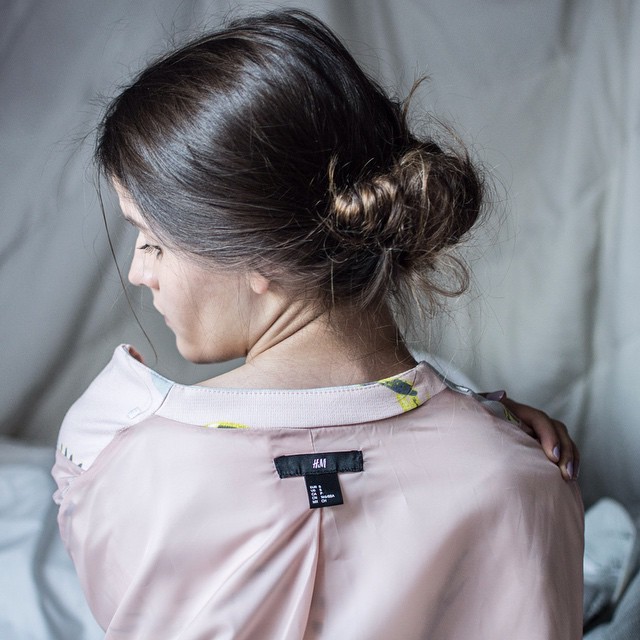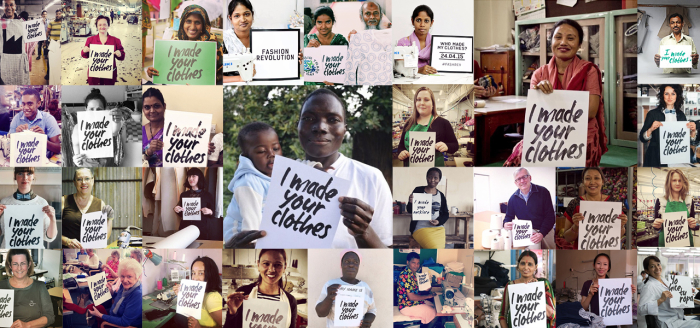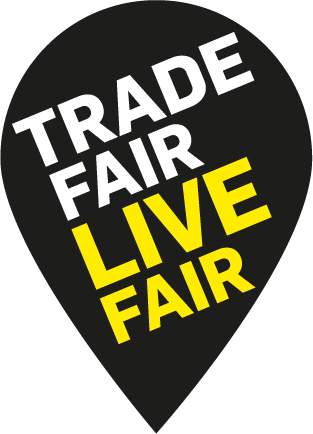Manila, Philippines – The Fashion Revolution Philippines commemorates the victims of the Rana Plaza factory collapse in Bangladesh, in alignment with the Fashion Revolution week held globally. The Rana Plaza factory collapse killed 1,138 textile workers and injured more people became an eye-opener to the world on 24 April 2013. The incident drove the Fashion Revolution movement to push for labor rights transparency and sustainability in the fashion world.
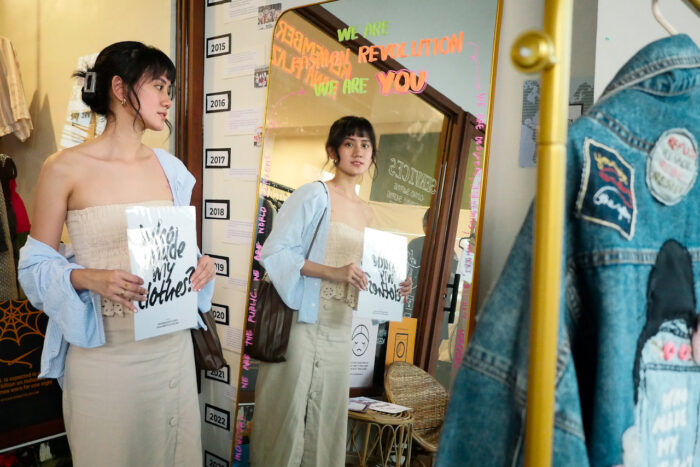
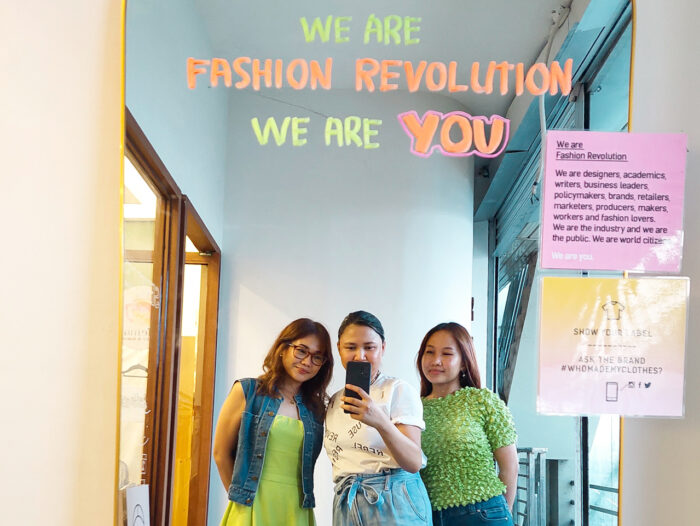
The Fashion Revolution Philippines’ first in-person event held for two days since the pandemic started. The two-day event happened in Moda Laya in commemoration of the 10 anniversary after Rana Plaza disaster. Attendees participated in activities such as clothes swapping, panel discussion with the experts and the screen showing of two documentary films.
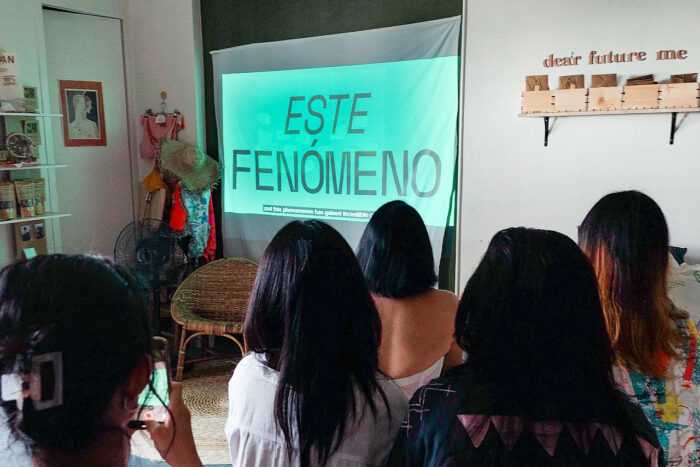
The “Se Abrió Paca,” a film made by the Fashion Revolution Guatemala, gave a heartfelt discussion among its viewers just after it was shown with the “True Costs” documentary and the power outage on the first day. Activities on the next day went well with the clothes swapping and panel discussion. Prince Ventura leads the panel discussion with Bianca Gregorio, owner of Moda Laya and founder of Re-clothing, Irene Subang, sustainable fashion designer and educator, and Jamie Naval, founder and CEO of Twenty Kids and Barrio Studios. Our guest experts discussed that the society today needs to focus on the importance of sustainable practices and a circular wardrobe.

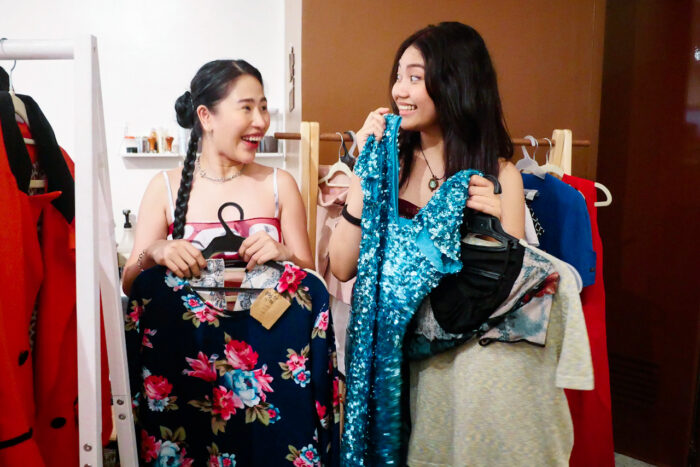
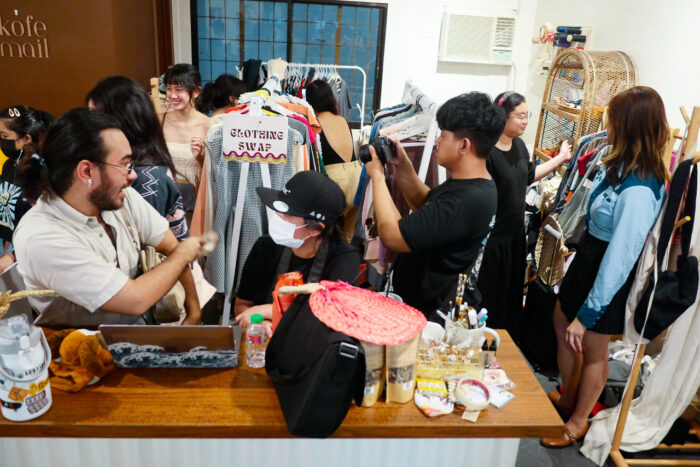
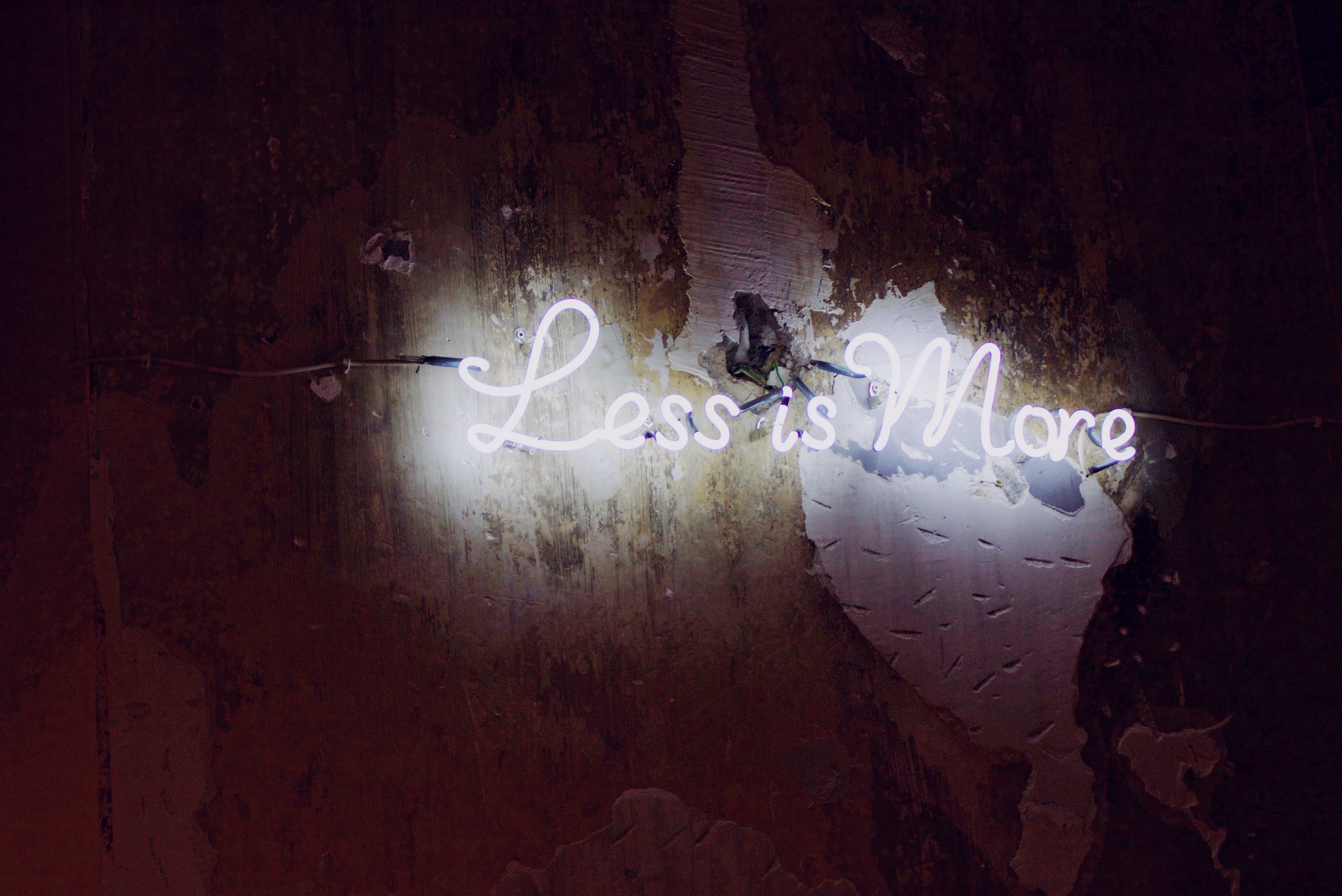 One morning I was walking with a friend of mine and we were discussing a birthday present which we were planning to buy for a friend. She asked “Why is it that sustainable fashion is always so expensive?” to which I answered: “Well it makes it possible for brands to actually pay their workers a living wage and to make sure they are working under safe conditions. People who buy sustainable fashion know that behind cheap clothing lies a production process characterised by unfair working conditions, wages and environmental ruin. They prefer buying pieces which are made under fair conditions even if it means they will have to pay more money. . It’s a question of priority.” But then I realised that this is not the case at all. In what way, then, should one envisage sustainable fashion and consumerism?
One morning I was walking with a friend of mine and we were discussing a birthday present which we were planning to buy for a friend. She asked “Why is it that sustainable fashion is always so expensive?” to which I answered: “Well it makes it possible for brands to actually pay their workers a living wage and to make sure they are working under safe conditions. People who buy sustainable fashion know that behind cheap clothing lies a production process characterised by unfair working conditions, wages and environmental ruin. They prefer buying pieces which are made under fair conditions even if it means they will have to pay more money. . It’s a question of priority.” But then I realised that this is not the case at all. In what way, then, should one envisage sustainable fashion and consumerism?
Systemic problem
The term ‘ethical consumerism’ – the social component of ‘sustainable consumerism’ if you will – is illustrative of the systemic problem which is present in today’s society, namely that spending your money otherwise is enough in order to ‘change’ something. It defends the idea that when we buy sweaters made from recycled materials, jewellery made out of lab-grown diamonds or reusable coffee cups, companies will eventually give in to consumers’ pressure and that this will change the world for the better, i.e. that the planet will be saved and that (garment) workers will live in excellent conditions. In short, ethical consumerism claims that we can buy our way out of trouble. This, however, is nothing more and nothing less than an illusion. Change can’t directly come from people only buying sustainable products or clothes; apart from consuming, we also need activism and sytemic change.
Lack of regulation
Why? Because even though there are some changes in some countries where some brands manufacture their clothes there are still too many brands who haven’t lived up to their promises[1]. Consuming more ‘ethically’ will not solve this problem. In her article The Twilight of the Ethical Consumer Elizabeth L. Cline (2020) points out that ‘What drives sweatshops is not a consumer demand for sweatshops. It is a lack of proper labour laws to protect garment workers and intense economic concentration that incentivizes the industry to drive down wages’. Us ‘consumers’ who give or don’t give priority to workers’ rights over cheap clothing will not solve the problem, but us ‘citizens’ raising our voices and holding brands accountable for the damage they inflict upon the people who work for them, can.
Accelerated workload
Apart from calling out brands and governments, there is another thing citizens can do which will not only benefit garment workers, but also ourselves and the planet. Consuming less. I wish I could say that garment workers only experience more pressure when the companies they work for organise sales but in the past decade or so one cannot speak of ‘summer sales’ or ‘winter sales’ anymore; rather, we live in a time of ‘permanent sales’. Think about Black Friday, Cyber Monday, and all the mails you receive when brands start to notice that you haven’t shopped with them for more than a month. Sales are everywhere, all the time and this not only leads to garment workers experiencing even more pressure than usual, but also to people ‘buy[ing] things [they] don’t need, with money [they] don’t have to impress people [they] don’t like’, as Dave Ramsey says in his book The Total Money Makeover (2007). Not only is overconsumption causing the workforce to increasingly experience more pressure, it is also the expectation and possibility of orders being delivered within a day or two of purchase. Companies need larger inventories which contributes to garment workers having to work even harder and longer without being paid accordingly.
Explore your own wardrobe
It is time for us to look differently at what we already have and make the best out of that. It is time that we end the idea that consuming more will make us happy and will fulfil our needs. When we continuously accelerate the amount of clothes which we buy , the needs which we think we are fulfilling are not of a physical, biological nature but of a social nature, i.e. they are not essential for our survival but we buy them because we want to be cool, to be ourselves, to gain other people’s attention and even love. Indeed, the way in which we dress helps us build our identity but imagine how many ‘identities’ people would have if they would buy new clothes every single week because they want to keep up with so-called ‘trends’. Companies’ expensive marketing tactics blind us into believing that we constantly need new clothes. We shouldn’t see personalities as trends which can be ‘bought’ but see them as constructs, unique to every individual, and base the way in which we think of people on their actions, not on their purchases. Imagine how much money you could save by just a simple shift in mindset. Sustainable fashion is also about buying less, re-exploring your wardrobe, renting clothes, borrowing and mending. If you combine these different forms sustainable fashion does not necessarily have to be expensive.
“Citizens like you and I must call brands out and hold them accountable for how they treat our planet”
Less is now, also for our planet. In 2017 each Belgian used an equivalent of 6.6 global hectares to meet their needs whereas the earth’s capacity only lies at .82 global hectares per capita (Global Footprint Network et al. 1961-2017). According to Quantis (2016) the footwear and apparel industry are responsible for around 8.1% of global climate impacts. What’s more, ‘every second an equivalent of a truck full of textile is sent to landfill or to incinerators’, Tatiana De Wée, who is the coordinator for Fashion Revolution Belgium, points out in her opinion article for Knack (Ellen McArthur Foundation as cited in De Wée, 2019). It is no secret that clothing consumption has a devastating impact on the environment and that it is essential that we switch to a circular economy model. This shift is partly in the hands of companies but in order for them to really change, citizens like you and I must call them out and hold them accountable for how they treat our planet. The good news is that this is easier than you think. We live in an era where digital activism becomes increasingly important, not only because COVID-19 keeps us from going out on the streets but also because more and more brands are active on social media. To a large extent they rely on earned media, i.e. people’s comments, mentions and reviews of their brand as a way of advertising.
Digital activism
It is our job to use our social platforms to demand systemic social and environmental change in the fashion industry. Each year in the week of 24 April Fashion Revolution Week is organised to commemorate the victims of the Rana Plaza disaster of 2013. It is a week in which people are asked to use hashtags such as #WhoMadeMyClothes and #WhatsInMyClothes to call on brands, but I encourage everyone to use these hashtags all year round, and to make digital activism a part of their lives, not only because it is easy but also because it is more powerful than one would think. Make sure to also sign petitions and send emails to brands – you can find templates for that on the Fashion Revolution website. Be part of leading the cultural shift towards a sustainable fashion system, take pride and above all, enjoy! Your voice counts!
References
De Wée, T. (2019, 8 november). “Hoe kan je roepen om armoede te bannen als je zelfs je eigen kledingarbeiders geen leefloon betaalt?” Knack Weekend. https://weekend.knack.be/lifestyle/mode/hoe-kan-je-roepen-om-armoede-te-bannen-als-je-zelfs-je-eigen-kledingarbeiders-geen-leefloon-betaalt/article-opinion-1529769.html?cookie_check=1612347407
Global Footprint Network, York University, & Footprint Data Foundation. (1961–2017). Open Data Platform [Dataset]. Global Footprint Network. https://data.footprintnetwork.org/#/countryTrends?cn=255&type=BCpc,EFCpc
Cline, E. (2020, 19 oktober). The Twilight of the Ethical Consumer. Atmos. https://atmos.earth/ethical-consumerism/
Quantis. (2018). Measuring Fashion: Environmental Impact of the Global Apparel and Footwear Industry Study. https://quantis-intl.com/wp-content/uploads/2018/03/measuringfashion_globalimpactstudy_full-report_quantis_cwf_2018a.pdf
Ramsey, D. (2007). The Total Money Makeover. Adfo Books.
[1] For more information, check Fashion Revolution’s Fashion Transparency Index 2020: https://www.fashionrevolution.org/about/transparency/
PŘEKLAD TEXTU OD GLOBÁLNÍHO KOORDINAČNÍHO TÝMU FASHION REVOLUTION
H&M patří k hrstce fast fashion řetězců, které, po letech společenské a environmentální ignorace, obrací list a soustředí se na pozitivní změny. Tleskáme skvělé práci, kterou H&M odvádí ve svých programech na podporu vzdělávání žen a dívek nebo zveřejněním 95% oděvních továren, které pro ně vyrábí oblečení, a 35% továren na textil a příze. Oceňujeme to, že používají organickou bavlnu a jiné udržitelné materiály pro svou Conscious Collection a to, že se zavázali platit minimální mzdu 60% dělníků ve svém dodavatelském řetězci do roku 2018.
Když dojde na společenskou a environmentální zodpovědnost, H&M zajisté dělá víc, než jiné značky. Na druhou stranu, právě v této oblasti není H&M úplně upřímné ke svým zákazníkům.
H&M vyhlásilo 18.-24.dubna jako ‘Světový recyklační týden’ a nejspíše utratilo majlant za marketing a za propagaci zpěvačce M.I.A., která je tváří kampaně. Recyklování je ohromná a důležitá výzva, před kterou jako módní průmysl stojíme. Proč tedy H&M pracuje na své strategii v izolaci a jediné vyhlašuje Světový recyklační týden bez spolupráce a podpory od ostatních značek? Z naší zkušenosti si dovolujeme tvrdit, že velké problémy, které zasahují celý průmysl, vyžadují řešení, které také zasahují celý průmysl.
Stránky společnosti H&M věnované Světovému týdnu recyklace říká: “Je to prosté: Přineste své nechtěné oblečení (od jakékoliv značky, v jakémkoliv stavu) do našeho nejbližšího obchodu. H&M je zrecykluje a vytvoří z něj nové textílie a vy za to dostanete poukaz na nákup u H&M.
Ale to není celé. Jen malá část z tisíce tun oblečení, které chce H&M sesbírat, se stane novým textilem. Většina oblečení je vyrobená z mixu několika materiálů: bavlna a polyester, vlna a akryl, hedvábí a elastan atd. Dnes zatím neexistuje technologie, která by uměla vlákna ve směsi od sebe oddělit a udělat z nich nový materiál.
Jak zaznamenala studie Světového Ekonomického Fóra vydaná v lednu 2014, tak ve skutečnosti něco mezi 40 a 60 procenty oblečení, které H&M od svých zákazníků vybere, je určeno pro second-handy a rozprodáno dál po světě a kontroverzně do rozvojových zemí.
Takže pokud H&M umí udělat nové textilie pouze z malé části vašeho oblečení, co se stane s tím zbytkem? A kdo vydělává na prodeji nošených oděvů do second-handů? Pokud nakupujete v H&M, zasloužíte si znát celou pravdu.
Navíc 18. – 24.dubna 2016 je velmi významný týden. Nezapomínejme, že 24.dubna pouze tři roky zpátky 1 134 dělníků vyrábějícíh fast fashion zahynulo v troskách Rhana Plaza v Bangladéši. A H&M je největší světový výrobce oděvů v Bangladéši.
Ze všech týdnů v roce je to právě tento, kdyby se společnost H&M měla zapojit do vyjádření solidarity s obětmi tragédie Rhana Plaza. Pro nás všechny by to měl být čas, kdy uctíme dělníky, kteří zemřeli ve všech katastrofách módního průmyslu od požáru v Triangle Shirtwaist v New Yorku v roce 1911 až po požár v Tazreen v Bangladéši před čtyřmi lety, a se všemi, kteří dál trpí v dodavatelském řetězci módního průmyslu
Světový Týden Recyklace společnosti H&M odvádí pozornost od těchto významných chvil, které bychom měli věnovat zamyšlení, dialogu a akci. Milióny lidí se budou v průběhu Fashion Revolution Weeku ptát na podmínky, kterým musí čelit dělníci v průmyslu, kde je dodržování základních lidských práv stále vzácné, a oslavovat lidi, kteří stojí za oblečením, které nosíme – od vlákna, přes tkaní a barvení až po švadleny a krejčí.
A mezitím je H&M velmi pozadu s nápravami nebezpečných pracovních podmínek v továrnách v Bangladéši, jak uvádí report uveřejněný Clean Clothes Campaign (CCC), International Labor Rights Forum (ILRF), Maquila Solidarity Network (MSN), and Worker Rights Consortium (WRC).
“Dělníci, kteří v Bangladéši šijí oblečení pro H&M nadále dřou v extrémě nebezpečných podmínkách, v mnoha případech zde chybí základní a urgentní záchranná opatření v případě požáru.” Říká Liana Fowvog z International Labor Rights Forum.
“Kdyby jen H&M chtělo investovat stejnou energii do samotného plnění jejich hlasitě vyhlášených slibů a závazků v oblasti udržitelnosti, jakou věnují jejich zveřejňování a zviditelňování, možná bychom již brzy viděli změny k lepšímu a bezpečnější oděvní továrny v Bangladéši,” říká Samantha Maher z Clean Clothes Campaign.
Zdá se, že poutání pozornosti na recyklování během tak významného týdne je jen způsob, jak odlákat pozornost od faktu, že by se dalo udělat více pro bezpečnost dělníků, kteří vyrábí pro H&M oblečení. Lidí, kteří pomáhají naplnit 3 900 H&M obchodů po celém světě a přispívají k obratu 28 miliard amerických dolarů za minulý rok.
Zatímco zde ukazujeme prstem na H&M, nejsou to jen oni. Mohli bychom (a nejspíš tak učiníme) označit celou spoustu dalších značek za nečestné k jejich klientům. A samozřejmě, že je super že se H&M snaží vyřešit ohromný problém textilního odpadu, ale přesně v těchto momentech je také potřeba se pozastavit a říct “počkat, tady něco nehraje, tohle není celé pravda”.
Během týdne od 18 do 24.dubna všechny vyzýváme k zamyšlení nad tím, co máte ve skříni. Pokud tam najdete obečení, které už moc nenosíte, můžete s ním udělat něco chytřejšího než se ho zbavit (u H&M nebo jinde)? Můžete ho vyměnit za něco jiného s kamarádkou, která si ho užije víc, nebo ho možná upravit tak, abyste se do něj zase zamilovali. A nebo objevte náš projekt haulternative – osm způsobů, jak si “pořídit” čerstvé kousky do šatníku bez nakupování.
A pokud plánujete nákupy u H&M v týdny Fashion Revolution a zanést tam své vyřazené oblečení, určitě se H&M zeptejte #whomademyclothes (kdo vyrobil moje oblečení) a požadujte opravdovou odpověď. Kdybyste znali celou historii oblečení, které máte na sobě, přimělo by vás to víc si ho vážit? Pokud si u H&M za své staré oblečení vyzvednete poukaz, kupte si něco, co si na sebe vezmete alespoň třicetkrát… nebo lépe, zeptejte se nejdřív sami sebe, zda to opravdu potřebujete.
Na závěr bychom vás chtěli poprosit, abyste si během Fashion Revolution Weeku vzpomněli na opravdové hrdiny, skutečné lidi, kteří oddaně pracují, abyste měli co na sebe. Na ty, kteří nikdy nebudou moct nosit, a už vůbez ne zakoupit, oblečení, které šijí pro vás.
H&M ha declarado la “Semana Mundial del Reciclaje” del 18 al 24 de abril de 2016 con una campaña de marketing de gran envergadura que pretende recoger 1.000 toneladas de ropa usada durante esa semana y reciclarlas para convertirlas en nuevas fibras. Fashion Revolution desafió este objetivo, señalando que sólo una pequeña fracción de las 1.000 toneladas propuestas como objetivo pueden convertirse en nuevas fibras textiles ya que la tegnología para ello aún no existe. La organización también desafió lo desconsiderado del momento para la promoción, que coincide con el 24 de abril, justo cuando hace tres años 1.134 personas murieron en Rana Plaza, en Bangladesh, haciendo ropa para cadenas minoristas, y H&M es el mayor productor de prendas en Bangladesh.
Orsola de Castro, co-fundadora de Fashion Revolution ha dicho: “Esta semana, de todas las semanas, H&M debería trabajar en solidaridad con el resto de nosotros para marcar el aniversario de la tragedia de Rana Plaza. Debería ser un momento para todos nosotros para honrar a los trabajadores textiles, aquellos que han muerto en tragedias industriales de la industria textil y aquellos que todavía hoy sufren en la cadena de suministro textil. ”
Fashion Revolution también señalaba el lenguaje confuso usado para describir el impacto de la iniciativa de reciclaje de H&M. Estábamos emocionados de que tanta gente mostrara su apoyo por una mayor transparencia y ayudara a comenzar una conversación sobre temas controvertidos relacionados con la exportación de ropa de segunda mano a países en desarrollo.
“Estamos contentos de que H&M haya admitido las verdaderas cifras de lo que se revende, lo que se reusa y lo que se convierte en nuevas fibras y de que cambiara el objetivo en su web en consecuencia. Esto ha sido algo muy influyente de hecho – usamos nuestra voz colectiva de manera moderada y hicimos que una de las mayores corporaciones del mundo diera un paso hacia una mayor transparencia.
Esperamos que H&M elimine su cupón de descuento en el futuro para no alentar un mayor consumismo entre sus jóvenes consumidores – eso sería el próximo paso lógico al abordar correctamente el tema de los residuos textiles. ”
H&M respondió con el siguiente comunicado: “Tan pronto como Fashion Revolution nos hizo conscientes de sus preocupaciones, comunicamos claramente qe no tenemos la intención de convertir en esta semana en particular como una Semana Mundial del Reciclaje de manera recurrente en el futuro, y hemos ofrecido inmediatamente elegir otra semana si hiciéramos otra Semana Mundial del Reciclaje en el próximo año o siguientes. ”
Fashion Revolution Week tiene lugar del 18 al 24 de abril en 89 países en todo el mundo. Por favor únete y ayuda a aclamar a los verdaderos héroes. Visita www.fashionrevolution.org para encontrar un evento cerca de ti. Juntos podemos hacer que el cambio ocurra.
Por favor ¡apoya a Fashion Revolution para ayudarnos a hacer nuestro mensaje más fuerte! Cada donación nos ayudará a dar voz a todos los implicados en la cadena de producción. Gracias por ser parte de este movimiento y por ayudarnos a seguir siendo fuertes.
Nota para prensa
- Millones de personas saldrán a la calle durante la Fashion Revolution Week para despertar conciencias y hacer preguntas sobre las condiciones a las que se enfrentan los trabajadores textiles y la persistente falta de derechos humanos en la industria de la moda, y para homenajear a la gente que está detrás de lo que llevamos – desde el granjero a la hilandera, la tintorera, sastres y más.
- Durante la semana del 18 al 24 de abril de 2016, te animamos a que pienses lo que hay en tu armario. Si tienes prendas sin estrenar, ¿podrías hacer algo con ellas en vez de deshacerte de ellas (en H&M o en cualquier otro lugar)? Lo podrías intercambiar con un amigo que lo aprecie más, o tal vez lo podrías modificar para que lo puedas seguir amando más tiempo. O por qué no probar nuestra Haulternative, y descubrir 8 maneras de renovar tu armario sin comprar nuevas prendas.
- Fashion Revolution Week se celebra del 18 al 24 de abril de 2016, no te olvides de preguntarle a tu marca favoria #quienhizomiropa o #whomademyclothes.
